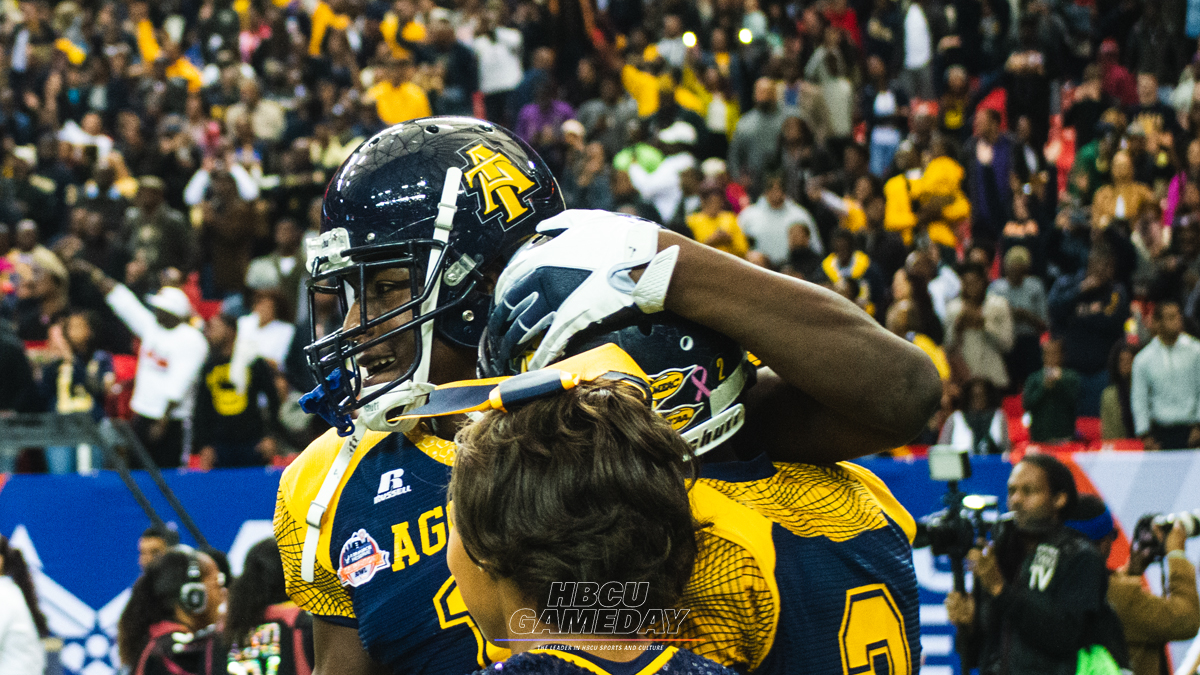The rise and fall of HBCU football dynasties are influenced by several key factors that can determine a program’s sustained success or decline. These factors often include:

1. Coaching Stability and Leadership
Rise: A successful, visionary coach with strong recruiting and game-planning abilities can turn a program into a dynasty. Coaches like Rod Broadway (North Carolina A&T), Willie Slater (Tuskegee), and Oliver Pough (South Carolina State) transformed their programs by instilling a winning culture and attracting top talent.
Fall: When successful coaches leave for other opportunities or retire, it often disrupts the continuity of success. For example, the departure of Connell Maynor from Winston-Salem State and Rod Broadway’s retirement at North Carolina A&T led to challenges in maintaining dominance. Their successors (Kienus Boulware and Sam Washington) had immediate success following their departures, but the programs eventually fell on hard times.
2. Recruiting Power and Talent Retention
Rise: Strong recruiting pipelines can provide a steady influx of top-tier talent. Successful dynasties consistently attract the best players in their regions, often due to a coach’s connections, institutional reputation, or historical success. Programs that consistently recruit top talent (like Grambling and North Carolina A&T) remain competitive.
Fall: Poor recruiting or the loss of key recruits to rival programs can lead to a dynasty’s decline. Additionally, if other schools start improving their recruiting strategies, it can weaken a once-dominant program. A drop in recruiting often coincides with coaching turnover, changes in academic requirements, or shifts in conference power.
3. Institutional Support and Investment
Rise: Dynasties often rise with strong institutional support, including investments in facilities, scholarships, and resources for athletes. Schools like Grambling and North Carolina A&T have benefitted from improved infrastructure and institutional commitment to football, allowing them to compete at a high level for extended periods.
Fall: Financial difficulties or reduced institutional support can weaken a dynasty. Limited resources for recruiting, training facilities, or staff salaries can make it difficult to maintain competitiveness. For example, budget cuts or changes in leadership at the university level can lead to declining support for the football program, impacting performance.

4. Conference Realignment and Changes in Competition
Rise: Changes in conference membership or competition levels can boost a program’s rise to dominance. For example, when a dominant team from a smaller conference moves to a higher level of competition, it can rise quickly if the infrastructure is in place. North Carolina A&T’s move to the Big South Conference opened new competitive opportunities after it departed the MEAC.
Fall: Conference realignment or shifts in competitive balance can also hurt a dynasty. If a program faces tougher competition due to realignment or if the talent gap between schools narrows, it can lead to the end of a dynasty. The MEAC-SWAC rivalry shift affected many MEAC teams when dominant teams like Florida A&M and North Carolina A&T switched conferences.
5. Player Development and NFL Draft Exposure
Rise: Dynasties often thrive when their players are well-developed and gain exposure for potential NFL careers. Programs that produce NFL-caliber talent, like Grambling and North Carolina A&T, can maintain a competitive edge by attracting top recruits who see the program as a stepping stone to professional success.
Fall: A drop in player development quality or less success in sending players to the NFL can diminish a program’s allure to recruits. When a program fails to help players transition to the professional level, it can struggle to attract the next generation of elite talent.
6. Cultural Relevance and Fan Engagement
Rise: Strong fan engagement, booster support, and media attention can sustain a program’s dominance. Programs that successfully create a winning culture, both on and off the field, are more likely to maintain their dynasty. NC A&T and Jackson State, for example, have large, passionate fanbases that provide consistent support.
Fall: A loss of fan interest, lack of media exposure, or a drop in the program’s cultural relevance can hurt momentum. Programs that fail to keep alumni and fans engaged may see a reduction in financial contributions and institutional backing, which in turn affects performance on the field.
7. Health of the Program and Team Morale
Rise: A healthy program with good player morale and team chemistry can foster extended success. Programs with good injury prevention practices, solid conditioning programs, and a positive locker room culture often sustain dominance.
Fall: Internal conflicts, team scandals, or player injuries can cause even the best programs to falter. For example, a high-profile scandal or conflict between players and coaching staff can derail a team’s chances, as seen with programs that face NCAA violations or off-field issues.
8. Competition from Rival Programs
Rise: A dynasty can rise when its primary competitors are weaker or going through transitions. For example, during the mid-2000s, South Carolina State took advantage of a down period for other MEAC schools to dominate.
Fall: Conversely, when rival programs start building their own dynasties (through new coaches or recruiting improvements), it can disrupt a team’s dominance. The rise of Jackson State under Deion Sanders, for instance, shifted the balance of power in the SWAC, challenging other programs like Alcorn State and Southern.
In summary, HBCU football dynasties rise through strong leadership, consistent recruiting, institutional support, and maintaining a winning culture. They often fall due to coaching changes, competition, and shifts in institutional priorities. Programs that can adapt to these challenges tend to re-emerge, while others might struggle to regain their former dominance.
(Go to Page III to see our top five)
